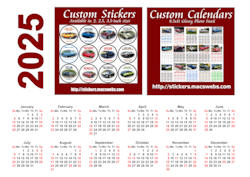
Fisher Body Number Plate
Section Links
FISHER BODY NUMBER PLATES
FISHER BODY NUMBER PLATES ANALYSIS
GENERAL DECODING
Atlanta, Georgia (ATL)
Baltimore, Maryland (BAL)
Framingham, Massachusetts (FRA)
Fremont, California (BF)
KANSAS CITY, MISSOURI (KAN)
Oshawa, Ontario
Fisher Body Number Plate - a.k.a. trim tag, cowl tag, firewall tag
-
Fisher Body was originally a separate company and made bodies for not only GM but Ford, Studebaker, Hudson and others. GM purchased a 60% interest in the company in 1919 and purchased the remaining stock in 1926. Fisher Body Division of General Motors usually occupied the same property as the final assembly plant. The body shells were assembled and painted and the majority of the interior installed before the bodies were "delivered" to the final assembly plant.
-
While there is an ongoing debate as to the meaning of the series/model number on the body plate, consensus is it is meant to be the trim level being assigned and not a designation between 6-cylinder and 8-cylinder engine to be installed. The bodies were built on a separate assembly line and the Fisher Body plant did not care if the car was to have a 6-cylinder or 8-cylinder engine as there was nothing during their assembly process that required a distinction. This means a Fisher Body plate with a series/model of 13411 does not mean the car came with an 8-cylinder engine just because the third digit (4 in this case) is an even number.
I have numerous 1964, 1965, 1966, and 1967 Chevelle and/or El Camino models where the first 3 digits of the VIN do not match the series on the body plate; meaning the body plate may show 67-13211 and mistakenly be thought of as a 1967 V8 300 2-Door Sedan but the VIN has 13111 meaning a 6-cylinder 300 2-Door Sedan. There are several examples shown in the Atlanta Body Plate area and the Baltimore Body Plate area. There are also several examples of body plates with the third digit being an odd number.
This oddity was not limited to the Chevelle 13xxx series. Here is an example on a 1967 Nova SS. The Fisher Body plate shows the style as 11837 where the VIN shows 11737.
Exactly why some Fisher Body plates had an even or odd series designation, and is not consistent, is not known. Naturally the 13817 and 13867 series/model body plates would be exempt from this anomaly since these two designate the SS 396 series and the SS 396 series was only available with a V8 engine. -
The links on the left will display various Fisher Body Number plates from those final assembly plants. As you will discover the various plants presented basically the same general information but each plant was still unique in the presentation (or lack) of other information. Neither Atlanta nor Framingham assembled the El Camino.
-
The body assembly date is shown as two digit number (01...12) representing the month and a letter (A...E) representing the week. Unfortunately, plants were open to deciding what a 'week' is in relation to specific dates. Therefore, the date ranges shown on the pages where they appear may or may not be correct. To conform to some standard, letter "A" represents dates 1-7, letter "B" represents dates 8-14, letter "C" represents dates 15-21, letter "D" represents dates 22-28, and letter "E" represents dates 29-31 as applicable.
-
The trim tag date is when the body shell was welded together at Fisher Body, not when the body finally got to Chevrolet and went through final assembly. Typically it took 2 days (4 shifts) to go through the Fisher Body process and another 1-1/2 day (3 shifts) for the final assembly process.
-
High-work content options/styles weren't "batched", as it unbalanced the main assembly line (like running two or three convertibles in a row on the Fisher side or many A/C's or bucket seat/console jobs in a row on the Chevrolet side); that's why there was a schedule bank between the Fisher side of the plant and the Chevrolet side, so the high-work content stuff could be scheduled to the main line at predictable intervals so individual line operations didn't get over-cycled.
-
You also need to consider whether the car was built at a traditional Fisher Body/Chevrolet plant (where each plant was separate, and they were operated by two different GM Divisions), or whether the car was built at a GMAD (GM Assembly Division) plant. GMAD plants were operated by one Division, and their operations/processes were integrated based on what made sense for the assembly process, not by whether the parts and tooling were released by Fisher Body or by Chevrolet. GMAD plants had total control of the assembly process and production scheduling from the first welding fixture in the Body Shop to the roll-test machines, and had much more flexibility in how production was scheduled and tracked; they operated differently (and more efficiently) than the Fisher Body/Chevrolet plants.
-
There is no absolute relationship between the trim tag and the calendar. The build date was for Fisher's use and they changed the date at their discretion.
-
A week is a generally a week in the body code, you just can't say that the "A" week started on the 1st of the month, or the "E" (or "D") week ended on the 30th of the month.
-
Generally the "A" week of the month is the first FULL calendar week of a month. For example if the month ended on a Tuesday, then that whole "assembly" week was part of the previous month even though there was only one calendar day in that month. There are exceptions to that statement and differences from one assembly plant to another so it’s not really worth worrying about. Using the VIN numbers is a much better way of determining when in a month a particular car was built.
-
-
The Fisher Body number is sequential for the particular series/model. That is, a 13817 SS 396 2-Door Sport Coupe built the 4th week of July, 1967 would have a higher body number than a similar 13817 SS 396 2-Door Sport Coupe built the 3rd week of July. However, both 13817 SS 396 2-Door Sport Coupes would have a lower body number than a 13617 Malibu 2-Door Sport Coupe built in March of 1967. Why? Simply because more 13617 Malibu models were built than 13817 SS 396 models for 1967.
-
The Fisher Body number has absolutely nothing to do with the Vehicle Identification Number (VIN) or engine type installed in the car.
-
Effective November 1, 2007 for the state of Oklahoma. It will be illegal to:
1. Knowingly and intentionally destroy, remove, cover, alter or deface, or cause to be destroyed, covered, removed, altered or defaced the trim tag plate of a motor vehicle manufactured from 1953 to 1977;
2. Knowingly affix a counterfeit trim tag plate to a motor vehicle;
3. Manufacture, offer for sale, sell, introduce, import or deliver for sale or use in this state a counterfeit trim tag plate; or
4. Offer for sale, sell, introduce, import or deliver for sale or use in this state a trim tag plate that was affixed to a motor vehicle at the time of manufacture but has since been removed or become dislodged.
Read the full Oklahoma statute here. -
September of the previous calendar year was generally when new models were released. This meant a plant shutdown during August for retooling. The earliest Fisher Body number plate I have is the last week of August, 1966 and the latest is the fourth week of July, 1967.
-
El Camino Fisher Body Plates are found in the El Camino Specific section.
-
Body assembly dates are shown on the tag as a 1- or 2-digit number and a letter for month and week. Because some month's weeks are only 1 or 2 days in some cases, the following is assumed for the days in the week. Week "A" are dates 1-7, "B" are dates 8-14, "C" are dates 15-21, "D" are dates 22-28, "E" are dates 29-31.



